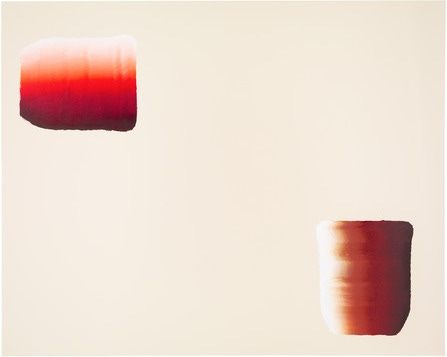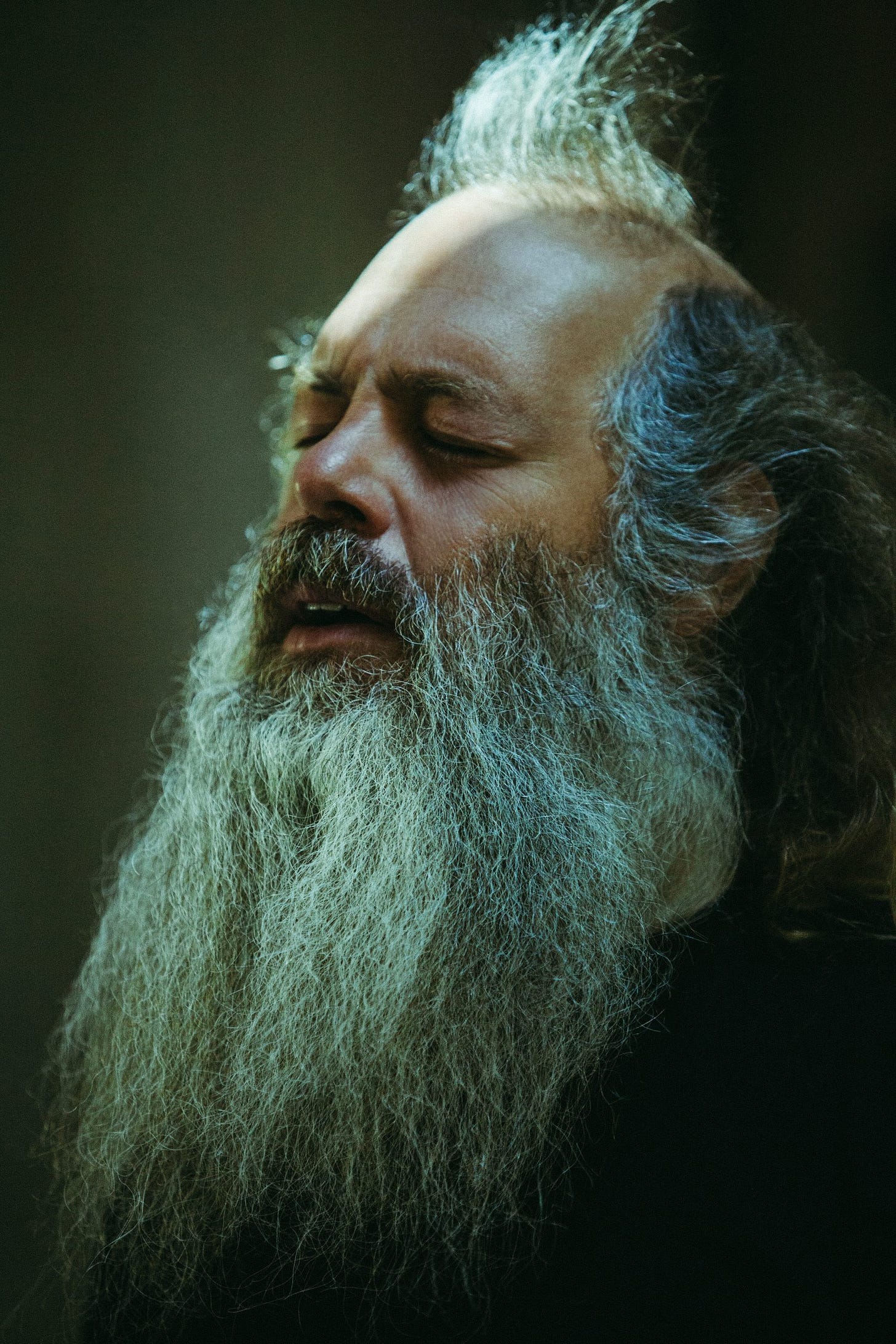About two years ago, I watched May It Last: A Portrait of The Avett Brothers- a documentary profiling The Avett Brothers and showcasing their folk rock band, personal lives, and artistic process.
The entire documentary is deeply profound and dare I say: required study material for all artists. I was immensely impacted by multiple moments in the documentary, but one in particular stood out. I remember hitting rewind a few times so I could better understand the moment at hand.
Here’s the scene I’m referencing:
In this scene, we see Seth and Scott in the midst of composing their song, I Wish I Was. What struck me was Scott’s demeanor during their creative process. His eyes were closed, he was seemingly very present, and still. To me, it seemed as if he was patiently waiting for the lyrics to present themselves. As if they were coming from a deep place within, rather than thinking at them. That scene alone, shifted something within me.
Earlier that year, I had started reading Rick Rubin’s book- A Creative Act: A Way of Being. If you aren’t familiar with Rick or his work, it’s fair to say that he is arguably the most prolific music producer that has ever lived. Rick is certainly enigmatic due to his unorthodox life and artistic practices- which often, are derived from eastern traditions. Rick started meditating at the age of 14 and he founded Def Jam Records in his dorm room at NYU at age 18. His life and work are representations of a meshing of artistic, spiritual, and commercial energies.
Even though I have never met or spoken to Rick, he has become a mystical, sage-like artistic mentor to me. His wisdom and insights continue to expand my artistic and spiritual awareness. I once believed that there was a distinction between “life” and “art” but through my own evolution and reflecting on Rick’s insights, I’ve come to realize that there is a holistic relationship between life and art as they inform one another.
Rick Rubin happens to be the founder of American Recordings, which is also the record label that The Avett Brothers are signed to. It’s no coincidence that Rick’s artistic philosophy resonated with Seth and Scott Avett, and I believe the documentary scene I referenced above, reflects Rick’s meditative approach to the creative process.
I’m reminded of a chapter from Rick Rubin’s book. The chapter is titled, “Memories and the Subconscious.” Here’s an excerpt:
There’s an abundant reservoir of high-quality information in our subconscious, and finding ways to access it can spark new material to draw from.
The psyche has admittance to a universal wisdom deeper that what we can come up with in our conscious mind. It provides a far less limited view. An oceanic source.
We don’t know how it works and we don’t know why it works, yet many artists tap into something beyond themselves without recognizing the process at play, purely through accessing the subconscious.
In attempting to assimilate Rick’s subconscious approach to my work as an actor, I have come realize it requires a ferocious surrender and giving up of control to allow creative truth to present itself. Having slowly adopted this way of working for the past couple of years, I can tell you firsthand that is incredibly challenging.
Jeremy Strong, in my opinion, is one of the greatest actors currently working. I often reference an interview with Stephen Colbert from 2022, during which Jeremy speaks about his idea of being a “vessel”:
When I initially watched Jeremy’s interview, what caught my attention was his struggle to articulate exactly what the work of an actor is- something that I’ve also grappled with defining.
For actors, this idea of accessing the depths of our subconscious in order to create art, can be confusing and frustrating because so much of the actor’s process is seemingly conscious and proactive. Actors must understand imaginary circumstances, memorize words, remember physical blocking, and explore a life that is often foreign.
Often times, actors feel like we have to be in a constant flow of energy or a state of “doing.” If an actor has researched and prepared for a role, there is often a tendency for the actor to “show” the work they’ve done. What this usually represents is a lack of trust in the preparation and can lead to a quality of work that is inauthentic and forced. Conversely, if an actor is able to “let go” and trust that their preparation has been completed and simply “be,” there is great potential for the work to resonate from a truer and more authentic place.
Jeremy Strong’s metaphor of a vessel relates to my newfound experience of approaching my work from a place of “being” rather than “doing.” Maybe a better attempt at articulating it would be to say that the work is more about “allowing” rather than “creating.” Allowing whatever wants to make its way from the subconscious to the conscious through the actor’s mind, body, words, and emotions. The primary component needed for this approach to function optimally is the ability to empty the vessel before the artist allows it be filled.
Further, Jeremy is correct when he says that it is all a “mystery.” I can confirm that over the past fifteen years, working and refining my artistic process and craft, it is truly mysterious. For some, the constant engagement with creative acts of mystery may be terrifying. But for me, it brings a great sense of comfort and peace. To know that I don’t know.
Around the same time that I watched The Avett Brothers documentary in 2023, on a random Friday afternoon, something brought me to LACMA (Los Angeles County Museum of Art). Maybe it was simply because I had not visited the museum in over ten years. Or maybe a deeper reason was that I felt a sense of curiosity and a need for new artistic inspiration. It’s also free for Los Angeles residents after 3pm on weekdays so maybe that was the biggest motivating factor!
Regardless of the motivating factor, there I was. After about ninety minutes of walking through the exhibits and snapping photos of the pieces that caught my eye, I came across a series of paintings by Korean artist Lee Ufan. I had never come across Lee or his work before, but I was captivated by his series, Dialogue.
After observing and reflecting on each piece in the series, I realized something. Lee Ufan had painted vessels. Or at least that’s what they appeared to me to be. When I left LACMA that day, I couldn’t let go of the idea of vessels. So in the following days, I started research Lee Ufan and explore his work. I was surprised to learn that he shared the same artistic philosophy as The Avett Brothers, Rick Rubin, and Jeremy Strong. In his words, he called it “empty consciousness.” Lee explains his process in a 2018 interview with Frieze as follows:
A main characteristic of my work is that before I start, I do a lot of thinking. When my ideas have matured, I begin to make. It starts in a conscious state but then I go unconsciously, without any thoughts. ‘Empty Consciousness.’ Physical activity done without consciousness.
Now you may say it’s just extreme coincidence that The Avett Brothers, Rick Rubin, Jeremy Strong, and Lee Ufan all share similar artistic philosophies and processes. I don’t think it’s coincidence at all which aligns these artists of different artistic mediums and cultural backgrounds. Each of these artists that I’ve referenced are at the apex of their respective art forms. It seems to me that they’ve all come to realize and practice the same thing.
My hope is that my artistic evolution continues to take me toward the same destination they’ve all arrived at- being and allowing.
I will leave you with this excerpt from a 2021 Art Basel profile on Lee Ufan:
The creating starts when the inside and outside coincide. So rather than myself controlling it, when the ‘external and internal’ meet, that is when the ‘external and internal’ becomes a control and that is when artwork transcends beyond me to a new dimension.








Interesting! On the relationship between life and art, there’s a passage I’ll have to send you from this book I’m reading (Chronicles from the Future). Kinda alludes to the same thing